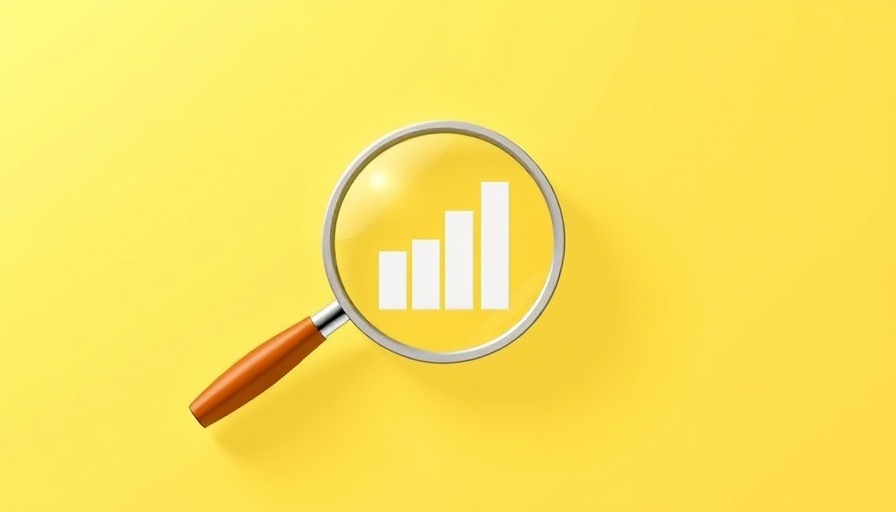
Unveiling the Complexity: The True Cost of Smart Campaigns
As digital marketing becomes increasingly reliant on automation, a significant question surfaces: Are smart campaigns truly smarter? While platforms like Google and Meta advocate for these automated strategies, which promise efficiency and simplicity, the reality is far more nuanced. Many marketers find themselves facing hidden costs that can undermine their advertising goals.
The Promise of Automation: An Enticing Mirage
Smart campaigns are designed to alleviate the burdens of busy business owners and lean marketing teams. By employing algorithms to optimize campaign decisions, these tools allure marketers with the potential for saving time and improving outcomes. With real-time data access that no human could match, automation seems to promise a golden ticket to success.
However, it’s crucial to recognize that these benefits often come at the cost of transparency and control. Advertisers quickly discover that the algorithms dictate critical decisions—from budget allocation to ad placements—with little room for human intervention. This lack of oversight can lead to spending that doesn’t reflect the desired marketing outcomes.
Understanding the Hidden Costs of Smart Automation
While automation drives efficiencies, it can also mask inefficiencies. One major drawback is the loss of visibility into performance data. Advertisers may grapple with limited access to detailed reports on search terms and audience targeting, leaving them in the dark about their campaigns’ actual performance. This transparency issue can cause budgets to spiral towards low-value placements, draining resources without yield.
An equally significant concern arises when automation prioritizes the platform's goals over the advertiser's needs. Many campaigns focus on maximizing volume instead of quality. For instance, while smart campaigns might flood a B2B business in high-ticket industries with leads, these leads can often be of lower value, leading to wasted spend and a disappointing return on investment (ROI).
The Over-Reliance Trap: A Double-Edged Sword
Marketers often fall into the trap of a 'set it and forget it' mentality when using automated systems. This complacency can foster missed opportunities to refine targeting strategies, optimize creative variations, or adjust budgets to respond to shifting market dynamics. Automation does not replace the need for human insight; rather, it demands it more than ever.
When these automated processes lack robust supervision, costs can unexpectedly rise in terms of cost-per-click (CPC) and cost-per-acquisition (CPA), as campaigns sometimes compete too broadly. This not only eats into advertising budgets but may inadvertently push the brand further from its ideal customer profile (ICP).
Strategies for Taking Back Control
To navigate the pitfalls of marketing automation, it is essential for marketers to take proactive steps. Here are several strategies to retain control over smart campaigns while still leveraging automation:
- Leverage First-Party Data: Harnessing owned customer data allows marketers to better target their campaigns, reducing dependency on algorithm-driven success.
- Define Smart Conversion Values: Focus on optimizing for meaningful metrics that align directly with business objectives instead of solely relying on platform-defined metrics.
- Conduct Incrementality Testing: This method allows businesses to gauge whether the conversions would have happened without the ad spend, providing clearer ROI perspectives.
- Adopt Third-Party Verification: Utilizing external tools for traffic and impression quality can provide a more transparent view of campaign effectiveness.
- Diversify Ad Spending: Avoiding over-reliance on single platforms helps mitigate risks associated with brand safety and budget waste.
What Lies Ahead for Marketers?
The future of smart campaigns hinges on finding the right balance between leveraging automation and maintaining strategic control. While marketing automation can boost efficiencies, marketers should remain vigilant about ensuring transparency and aligning campaigns with their broader business goals.
By thoughtfully integrating automation with robust oversight, marketers can harness the true power of smart campaigns and mitigate the associated risks. In an ever-changing digital landscape, those who master this balance will not only enhance their advertising effectiveness but also secure their brands' long-term success.
As we move toward 2025, the marketing landscape will shift significantly. With increasing ethical considerations surrounding AI and automation, it's crucial for businesses to prioritize human insights alongside technological advancements. This balanced approach will ultimately empower marketers to make informed, effective decisions that drive positive growth and ROI.
 Add Row
Add Row  Add
Add 




Write A Comment